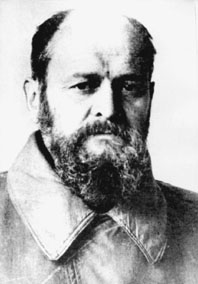

 | Page 782 |  |
Krukowski was a researcher of Paleolithic cave camps such as Ciemna and Okiennik, of loess and sand sites, and of mines. He examined the locations of the sites in poland of Piekary, Gora Pulawska, Grzybowa Gora, Swidry Wielkie, Wieliszew, and Oronsko. He also organized and led a research campaign to Rydno, in which he focused on the systematic identification of a settlement complex in connection with the oldest mine, hematite processing and distribution, and a chocolate-colored rock bed.
After World War II, he had trouble finding a permanent position. In 1956, he received the title of professor extraordinarius.

Stefan Krukowski
(Arkadiusz Marciniak)
The first part of his first work, synthetic in character, Pierwociny krzemieniarskie gornictwa transportu i handlu w holocenie polskim (Beginnings of Flint Mining, Transportation, and Trade in Holocene of Poland) was published in 1920, and the second part was published in 1922. In this work, Krukowski was concerned with the origins of material used for flint tools. He described his search for siliceous rocks in the territory of Poland, drew differences among them, and illustrated their influence on the morphological diversity of flint inventories. He examined the possibility and mechanics of studying raw materials distribution and the possible ways that prehistoric societies obtained them. His work matched the highest standards of the day.
He was also the author of an overview of the Paleolithic age of Poland, published in 1948 as the synthesis Prehistoria ziem polskich (Prehistory of the Polish Lands), written jointly with jozef kostrzewski and Roman Jakimowicz. In 1976, Krukowski published another synthesis of the Polish Paleolithic and Mesolithic ages entitled Skam 71, in which he presented his theory of genetic prehistory. It was an original study, but because of its complicated terminology and hermetic language, its reception was limited. He also created a dictionary of concepts to be used in archaeology.
Genetic prehistory, Krukowski’s original contribution, was an attempt to provide new directions in Stone Age archaeology, and developed toward the end of the 1960s, it was hoped it would provide an alternative to traditional Paleolithic prehistory. Krukowski pointed out the necessity of studying all flint assemblages, such as raw material, blanks, and waste, not just tools. The objective of genetic history was to determine the origin, formation, and purpose of stone tool industries. A crucial aspect in its determination was the study of flint blanks, which enabled him to recognize the unintended effects of the producers on the basis of a detailed analysis of all artifacts making up a given inventory. Genetic prehistory and the flint blank method permitted the separation of industries in mixed inventories.
The site of Krzemionki Opatowskie is located about ten kilometers southeast of Ostrowiec Swietokrzyski, Tarnobrzeg voivodeship, in poland. It is the best known as “the black and white striped flint mine,” within an agglomeration of some excellent and characteristic flint mines in the northern and northeastern parts of
 |  |